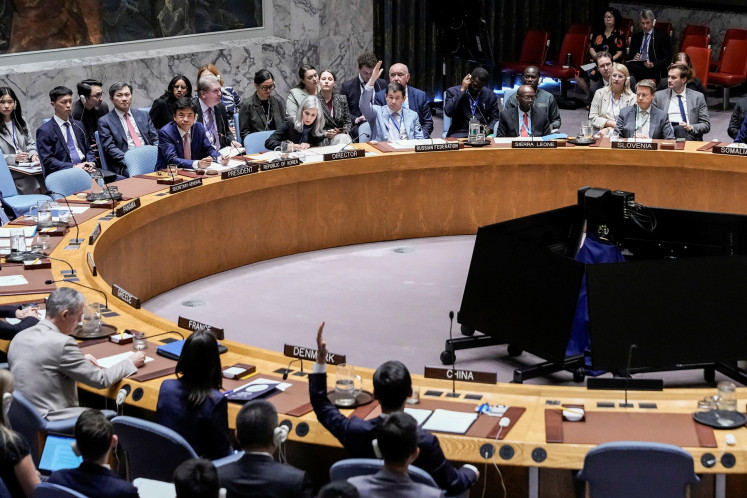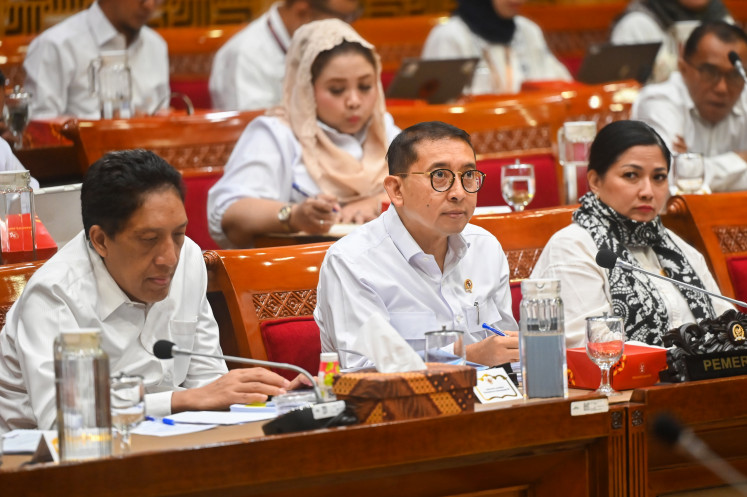Popular Reads
Top Results
Can't find what you're looking for?
View all search resultsPopular Reads
Top Results
Can't find what you're looking for?
View all search resultsRestoring film history, one movie at a time
For 37 years, Sinematek has been the home of the country’s history of cinema, collecting countless films, screenplays, books, newspaper clippings and government regulation drafts in its archives since its founding on Oct
Change text size
Gift Premium Articles
to Anyone
F
or 37 years, Sinematek has been the home of the country’s history of cinema, collecting countless films, screenplays, books, newspaper clippings and government regulation drafts in its archives since its founding on Oct. 20, 1975.
But then, documents are not as infinite as history itself. Film stocks, for instance, must be kept in a climate-controlled vault. Should they become exposed to heat, water or high humidity, the film stocks could lose their quality.
The only way to get the film back into a good shape is through restoration.
Such an initiative is being led by Yayasan Konfiden, a nonprofit organization that aims to create a database of every Indonesian film, and the National Museum of Singapore.
In recent months, the two institutions have been working together to restore an Usmar Ismail film, Lewat Djam Malam (After the Curfew, 1953).
Konfiden worked on preparing the film stock from Sinematek and taking care of all the necessary legal matters to send the film abroad for restoration. The National Museum of Singapore provided the funding and the connections to the restoration lab.
Currently, the film is being restored in L’Immagine Ritrovata, a cutting-edge restoration workshop in Bologna, Italy. At the time of writing, the restoration is almost 80 percent completed.
The idea to restore Lewat Djam Malam came from senior film journalist JB Kristanto.
“I believe no film in Indonesia has come close to matching what Usmar achieved in that film,” he said. “It’s also still relevant in the current climate of Indonesian politics.”
The film narrates the return of a freedom fighter to society. The return, however, yields no happy moments for the protagonist, as he witnesses what he considers as a subversion of nationalistic values.
His former partners in the army have become money-grabbing tycoons, while the youth around him are living a hedonistic lifestyle.
“Lewat Djam Malam reveals this peculiar view of our history: Who actually deserves the credit for Indonesian independence — the military or the civilians? Similar tensions could be found in many points in Indonesian history. The film is important for that historical relevancy,” Kristanto explained.
According to film historian Misbach Yusa Biran, Lewat Djam Malam is the first Indonesian film produced with an international film festival in mind.
“Usmar Ismail prepared the film for the first Asian Film Festival in Tokyo. When the film was completed, the government didn’t allow the film and the filmmakers to travel there. It was actually the government’s way to protest against the Japanese, for the loot they haven’t returned to us after the war.”
The restored version of Lewat Djam Malam will take its first bow at the National Museum of Singapore on March 28.
A copy of the film will then be sent to Indonesia.
Konfiden is planning to distribute the film here so the public can also experience it.
Plans are also being considered in how the other films held by Sinematek can receive a similar treatment. It is the main aim of the project: to bring public attention back to Sinematek.
“By restoring Lewat Djam Malam, we could show the public that such initiatives are possible and in the future the public can work together to restore other films. By restoring the films, we are actually restoring national film history,” Kristanto said.
During his two-day stay in Indonesia, L’Immagine Ritrovata director Davide Pozzi visited Sinematek’s film vault.
“The condition there is actually pretty good. The film vault of Sinematek has the temperature just about right and the humidity is also tolerable,” Pozzi said.
“I have seen bad places to store films in this part of the world. Sinematek is not one of them. That is why we didn’t have any problems in restoring Lewat Djam Malam. Except for a bit of mold here and there, the celluloid is preserved quite well.”
“More importantly, the negative prints are at Sinematek. If you want to have a good restoration, you’ll need those prints,” he added.
Currently, Sinematek houses 548 negatives for color films and 84 negatives for black-and-white films, meaning there are 632 pieces of national film history waiting to be restored.
“For a start, you could check the collection first and make a list of films that need to be restored. No money is needed for that. Knowing your own collection is the first step for restoration. All you need is the negative prints, a rewinding table to check the prints and someone to operate the table. Sinematek has all of those.”










